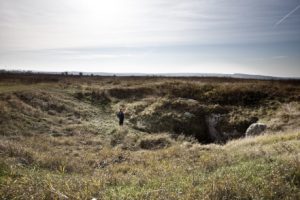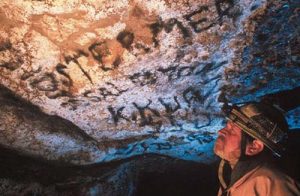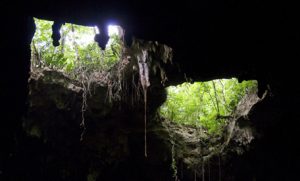 During World War II, and Jews who didn’t want to entrust their survival to the Nazis, had to make a way of escape or find a place to hide. For those who hoped against hope that the Nazis didn’t really hate them, or that the war would end very soon, the chance to escape came and went before they had really given the situation much thought. This was especially true for the Jewish people who had been born in the countries they now found themselves outcasts of.
During World War II, and Jews who didn’t want to entrust their survival to the Nazis, had to make a way of escape or find a place to hide. For those who hoped against hope that the Nazis didn’t really hate them, or that the war would end very soon, the chance to escape came and went before they had really given the situation much thought. This was especially true for the Jewish people who had been born in the countries they now found themselves outcasts of.
Zaida Stermer, his wife Esther, and their six children, of Korolowka, Ukraine, dug up the last of their possessions from behind their house, loaded their wagons with food and fuel, and drove away into the darkness. It was October 12, 1942. The Stermers weren’t alone. Traveling with them were about two dozen friends and family members, all Jews…and all in a lot of trouble. They had almost waited too long, and now the Nazis were out to kill all the Jews in the village. Ukraine had been under German occupation for about a year by then, and they had hoped that the war would end, and they could get back to their lives, but instead, the situation was exploding, and they had to get out while they still could.
The group made their way quietly about 5 miles to the north of town. With the Nazi “roundups and mass executions” of Ukrainian Jews in full swing, they were headed to a dirt road that ended at a sinkhole. There they made their way into a summertime tourist attraction known as the Verteba cave. They knew this was only  going to be a temporary solution, because in the summer, the tourists would be back, and they would be discovered. They hoped they had until summer.
going to be a temporary solution, because in the summer, the tourists would be back, and they would be discovered. They hoped they had until summer.
Modern cave explorers would not consider going underground without reliable light sources, technical and safety gear, navigation experience, clothing to stave off hypothermia, and of course an adequate supply of food and fresh water. The Stermers and their little band of survivors had none of these things. They went in in the dark, and had no light in the morning either. They fumbled their way further and further into the cave, hoping they could find there way back out. The cave had little ventilation and no real water supply, except what seeped through the rocks. Cooking was dangerous, and they almost lost a child to smoke inhalation. They moved the cooking further into the cave where they found better ventilation. Then came the worst night of all…
They had been in Verteba about four weeks, and thinking they might make it when their optimism was shattered. Suddenly in the dark they heard the sound of boots, and the rattling of guns. Someone yelled in Yiddish, “The Germans are here!! They’ve discovered us!!” Just as suddenly, and before anyone could think twice, Ester spoke up, “Very well, so you have found us. What do you think? Do you think that unless you kill us the Fuhrer will lose the war? Look at how we live her, like rats. All we want is to live, to survive the war years. Leave us here.” She was stalling!! She was allowing the others time to escape. As the stunned Germans listened to this little lady, the others hurried to the escape route they had found earlier. In the end, the  Germans only got eight of the cave dwelling Jews. Miraculously, Esther escaped. They hid out with friends throughout April 1943, but things were heating up again, and Esther told her family, “We are not going to the slaughterhouse.” She said to her son, Nissel, “Go to the forest, find a hole, anything.” It was thanks to Nissel that the family survived. Nissel located the cave known as the Priest’s Grotto. It was thought that the world record for living underground was 205 days, but the true record was set by the women and children who survived the Priest’s Grotto, by living completely underground for 344 days without seeing the outside world. It was a tough way to live, but they did survive, and that is a miracle.
Germans only got eight of the cave dwelling Jews. Miraculously, Esther escaped. They hid out with friends throughout April 1943, but things were heating up again, and Esther told her family, “We are not going to the slaughterhouse.” She said to her son, Nissel, “Go to the forest, find a hole, anything.” It was thanks to Nissel that the family survived. Nissel located the cave known as the Priest’s Grotto. It was thought that the world record for living underground was 205 days, but the true record was set by the women and children who survived the Priest’s Grotto, by living completely underground for 344 days without seeing the outside world. It was a tough way to live, but they did survive, and that is a miracle.


One Response to Survivors Of The Priest’s Grotto